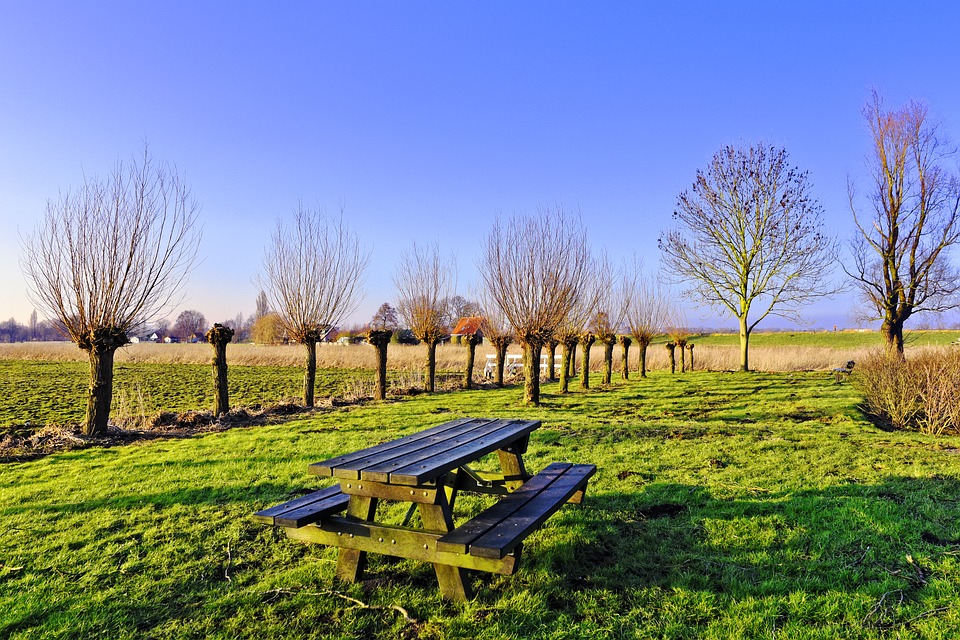4 Ways to Protect Your Outdoor Furniture from the Elements
 Outdoor furniture needs to be tough in order to withstand the elements, but it also needs a little bit of care from the owners if it is going to stay in good shape. Protecting outdoor furniture does not take a huge amount of work or a major investment, so it is always a good idea to protect furniture to make sure that you don’t need to replace it later.
Outdoor furniture needs to be tough in order to withstand the elements, but it also needs a little bit of care from the owners if it is going to stay in good shape. Protecting outdoor furniture does not take a huge amount of work or a major investment, so it is always a good idea to protect furniture to make sure that you don’t need to replace it later.
Paint Everything
A coat of paint can make furniture look more attractive after it takes a beating, but the real value is the paint’s ability to prevent damage in the first place. Most paint will reduce the amount of UV light that makes it through to the furniture, which helps to keep it looking pristine for as long as possible. It also provides some basic protection from abrasion because the paint will wear away in place of the wood underneath.
Not all paint is created equal. Latex paint will last much longer than oil paints, and it will usually take less work to apply it to the furniture in the first place. It will still need to be replaced every so often, and the frequency will depend on the conditions that the furniture experiences. Simply keep an eye on the furniture and apply a new coat of paint whenever it starts to wear down, peel, or chip away. If it seems like you need to replace the paint too often, you will need to take other steps to make sure that your furniture stays protected.
Apply Water Sealant
A simple water sealant is a viable alternative to paint for people who want to preserve the original appearance of their furniture while still offering a decent level of protection. Some sealants will also be effective if they are used on top of a layer of paint for an added layer of protection.
Sealants work by making sure that fluids cannot pass through them to reach the furniture. That makes them a great choice for areas that are prone to heavy rain or snow. Water can cause rapid damage if it gets into furniture and freezes, or it can cause gradual damage by encouraging rotting, so using a sealant is vital in those areas. It has less value in arid regions, but it can still be useful for protecting the furniture against occasional rain or even from people who might spill fluids on it by accident.
Protective Placement
The most basic way to protect furniture is to position it so that it is exposed to as little danger as possible. That is often easier said than done, but it does provide a firm foundation for the other protective techniques.
If possible, outdoor furniture should be kept in the shade. It is fine to move it out into direct sunlight when it is in use, but it should be taken back under cover later on. Furniture that is too heavy to move can go under a retractable awning, which will provide plenty of shelter from the sun.
Furniture in windy regions may need to be secure to the ground to prevent it from blowing out of cover. That will also help to protect it from scratches and other incidental damage that can occur while it moves. Keeping it in a walled or fenced area, or even on a porch with a railing, will usually suffice.
A simple cover will also prevent most damage. It can be inconvenient if it needs to be removed before use, and it is not always visually appealing, but it is highly effective. Consider using covers for furniture that is not going to be used in the near future, or as a stopgap solution while you create an environment that can shelter the furniture.
Frequent Cleaning
A little care will prevent wear and tear. Outdoor furniture tends to accumulate dirt and debris over time, which can wear away at the material with just a little bit of pressure. It can also stain fabric and cushions. Regular cleaning will prevent that from happening, which will extend the lifespan of the furniture. It also provides a convenient time to inspect the paint and determine if it needs a new coat or not.

















